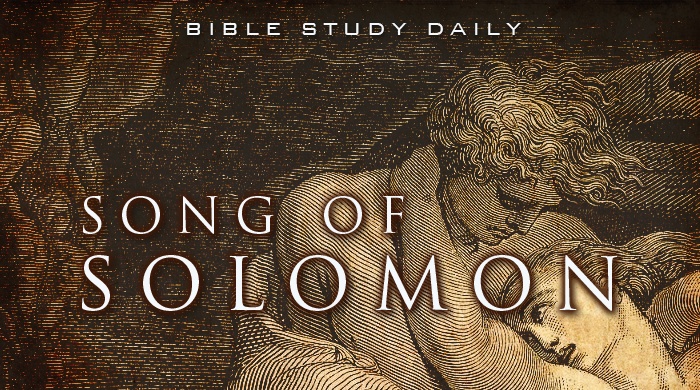Introduction
The book is also called "Song of Solomon," or "Canticle of Canticles."It is one of the megillot (scrolls) found in the last section of the Tanakh, known as the Ketuvim (or "Writings").
It is unique within the Hebrew Bible: it shows no interest in Law or Covenant or the God of Israel, nor does it teach or explore wisdom like Proverbs or Ecclesiastes (although it does have some affinities to wisdom literature, as the ascription to Solomon indicates); instead, it celebrates sexual love, giving "the voices of two lovers, praising each other, yearning for each other, proffering invitations to enjoy". The two are in harmony, each desiring the other and rejoicing in sexual intimacy; the women of Jerusalem form a chorus to the lovers, functioning as an audience whose participation in the lovers' erotic encounters facilitates the participation of the reader.In modern Judaism the Song is read on the Sabbath during the Passover, which marks the beginning of the grain-harvest as well as commemorating the Exodus from Egypt. Jewish tradition reads it as an allegory of the relationship between God and Israel, Christianity as an allegory of Christ and his bride, the Church.
Content
There is widespread consensus that, although the book has no plot, it does have what can be called a framework, as indicated by the links between its beginning and end. Beyond this, however, there appears to be little agreement: attempts to find a chiastic structure have not been compelling, and attempts to analyse it into units have used differing methods and arrived at differing results. The following schema, from Kugler & al. must therefore be taken as indicative, rather than determinative:
Introduction (1:1–6)
Dialogue between the lovers (1:7–2:7)
The woman recalls a visit from her lover (2:8–17)
The woman addresses the daughters of Zion (3:1–5)
Sighting a royal wedding procession (3:6–11)
The man describes his lover's beauty (4:1–5:1)
The woman addresses the daughters of Jerusalem (5:2–6:4)
The man describes his lover, who visits him (6:5–12)
Observers describe the woman's beauty (6:13–8:4)
Appendix (8:5–14)
Author
It was accepted as canonical because of its supposed authorship by Solomon and based on an allegorical reading where the subject-matter was taken to be not sexual desire but God's love for Israel.
The rest of this comprehensive Wikipedia article on the book can be read here.
An extract from BHFA Volume 5
Songs 4:1b
עֵינַיִךְ יוֹנִים מִבַּעַד לְצַמָּתֵךְ
behind your woman's veil inside doves your eyes
KJB thou hast doves' eyes within thy locks:
NASB Your eyes are like doves behind your veil;
ESV Your eyes are doves behind your veil.
NLT Your eyes are like doves behind your veil.
NIV Your eyes behind your veil are doves.
For a discussion of יוֹנִים refer to Jonah here.
An extract from BHFA Volume 5
Songs 6:12
לֹא יָדַעְתִּי נַפְשִׁי שָׂמַתְנִי מַרְכְּבוֹת עַמִּי־נָדִיב׃
Amminadib the chariots of it set me my soul I knew Before
KJB Or ever I was aware, my soul made me like the chariots of Amminadib.
NASB “Before I was aware, my soul set me Over the chariots of my noble people.”
ESV Before I was aware, my desire set me among the chariots of my kinsman, a prince.
NLT Before I realized it, my strong desires had taken me to the chariot of a noble man.
NIV Before I realized it, my desire set me among the royal chariots of my people.
There are two footnotes in the BHS text. The first suggests an alternative verb instead of "he sets me."The second notes that the Greek Septuagint and the Latin Vulgate were translating from a Hebrew text that did not have the maqqeph (hyphen) connecting the last two words.
This then results in translating these two words as one proper noun, "Amminadab." The words found in the MT would not typically be connected by a maqqeph, which makes the suggestion a possible alternative.
From the above it seems that it is impossible to find a dynamic equivalent of this sentence. It is therefore generally accepted that the MT as we have it had been corrupted in some way or another and we therefore simply do not know exactly what is meant.
